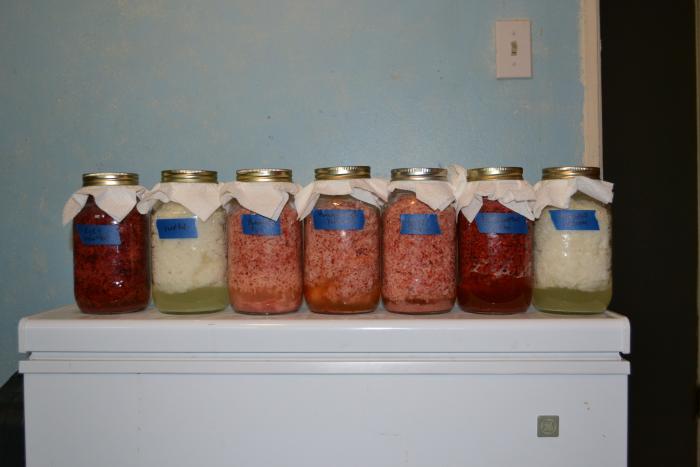Ok, Here's the 1 week update on the homemade RYR experiment. As a reminder, the batches are in order from left to right.
1. 3 tbs crushed RYR + 1/3 oz crushed yeast ball (control)
2. 1/3 oz crushed yeast ball (control #2)
3. 3 tbs crushed home dried RYR
4. 3 tbs crushed home dried RYR + 1/3 oz crushed yeast ball
5. 3 tbs refrigerated RYR starch mass
6. 3 tbs crushed RYR + 1/3 oz crushed rice yeast ball + nutrient
7. 1/3 oz crushed yeast ball + nutrient
Batches one and five appear to be under performing relative the the rest of the batches. It is unclear to me why batch one is having difficulties. In batch five there are two probable explanations. One, a decrease in the viability of the relevant organisms from storage of the starch mass in the fridge. Two, an under pitching of the same organisms owing to the water content of the starch mass.
Batches two, three, four, and seven all appear to be at about the same point. I'm considering that as essentially a baseline at this point.
Batch six is showing superior conversion at this point. I find it probable that the yeast nutrient has been useful to the monascus purpureas. Batch seven is a straight yeast ball batch with nutrient, and is showing essentially identical results to the batch with no nutrient. That would lead me to believe that the yeast nutrient is not useful to the organisms in the rice yeast balls, but only to the monascus purpureas.
Since we have average performances from both of the batches containing homemade RYR, I believe the efficacy of drying your own RYR now has some good evidence behind it. Furthermore, the addition of the rice yeast ball to the homemade RYR does not appear to have had a significant effect on it's performance. Therefore, I believe the other organisms responsible for saccharifying the starch have also survived the drying process.
It's still to early in the process to draw any firm conclusions, but the data is certainly suggestive.
Happy Brewing!








